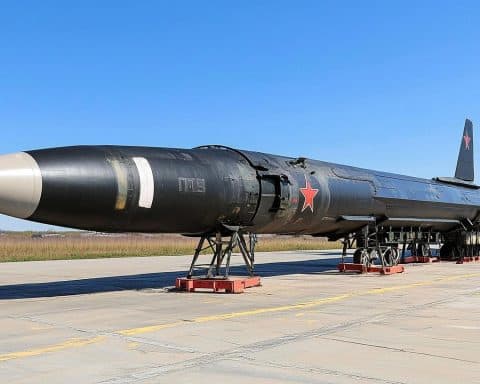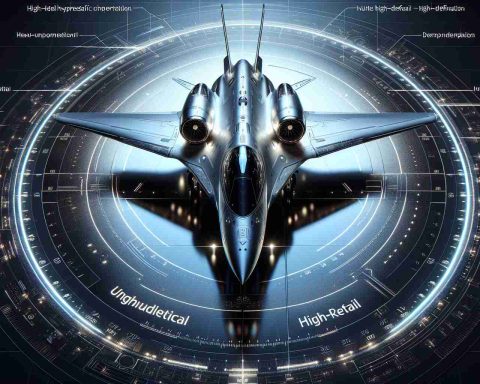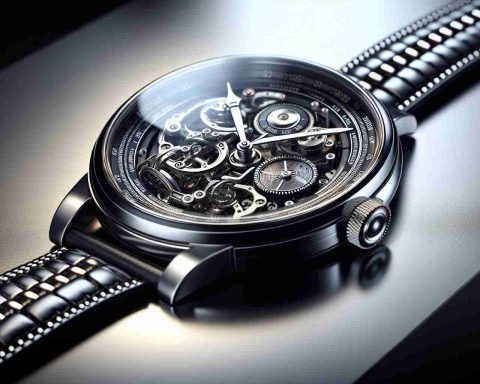The Mikoyan MiG-35, an advanced fourth-generation jet, emerged as a modernised version of the MiG-29, designed to enhance warfare capabilities through state-of-the-art systems. Presented to the Russian government in 2017, the MiG-35 includes upgraded avionics, fly-by-wire technology, and a sophisticated targeting system, allowing it to perform a wide range of military operations. Powered by advanced RD-33MK engines, this aircraft aims to balance power with reduced visibility, positioning itself as a formidable multirole fighter.
However, production and delivery of the MiG-35 have been far from widespread. Only a handful of jets have made it into service, prompting concerns over Russia’s resource availability amid ongoing geopolitical tensions. Interest in exporting the MiG-35 has also been lacklustre, as nations like Egypt and India have opted for better-performing alternatives in the market.
With ongoing military setbacks in Ukraine and a tarnished international reputation, the future of the MiG-35 appears dim. Despite Russia’s historical legacy of building respectably competitive aircraft, recent underperformance in combat has raised doubts about the quality of its military technology. Although the MiG-35 integrates advanced capabilities, it remains uncertain whether this aircraft will ever see large-scale production. In the face of increasing challenges, the path ahead for the MiG-35 is fraught with ambiguity and a diminishing chance for success in the global arms market.
The Impact of the Mikoyan MiG-35 on Global Military Dynamics
The Mikoyan MiG-35, often hailed as a symbol of Russian aerospace engineering, reflects not just the technological prowess of a nation but also the intricate web of international military relations. Its effect on the lives of individuals, communities, and nations is multi-faceted, ranging from defence capabilities to geopolitical strategies.
In the context of communities, especially in countries that engage in arms procurement, the MiG-35 can potentially alter local economies and job markets. Defence contracts often lead to an increase in job opportunities, both directly in military manufacture and support roles, as well as indirectly through the growth of local industries that supply parts and services. However, this “military-industrial complex” might also invoke controversy. Many argue that prioritising military contracts over social programmes can divert funds from essential services like education and healthcare, impacting the overall quality of life for citizens.
Moreover, nations that pursue advanced fighter jets like the MiG-35 often find themselves embroiled in contentious debates over ethical military expenditures. This raises questions about the balance between national security and the promotion of peace. Some critics assert that investing heavily in military capabilities can escalate tensions, leading to arms races and conflicts rather than resolution.
Additionally, the geopolitical implications of the MiG-35 are notable. The aircraft serves as a barometer for Russian influence in regions such as the Middle East and Asia. Countries that acquire advanced military technology often become part of strategic alliances or disputes. For instance, Egypt’s decision to purchase the MiG-35 was seen as a way to fortify its military standing in the region, thereby affecting its relations with neighbouring nations and altering regional power dynamics.
In contrast, the limited production and export of the MiG-35 highlight the challenges facing Russia’s defence sector. The country’s economic difficulties, compounded by international sanctions and a declining reputation stemming from military actions in Ukraine, raise doubts regarding its ability to compete in the global arms market. This situation impacts not just military personnel and defence contractors, but also the general population, as resources that could be directed toward infrastructure and public services are instead invested in military advancements that may never come to fruition.
The lingering question revolves around whether the MiG-35 will achieve its intended role in bolstering Russia’s military efficacy. As nations like India and Egypt choose alternatives from Western competitors, the spectre of an underperforming military technology looms larger. This could lead to a reevaluation of defence budgets and strategies among countries that initially showed interest in the MiG-35.
Ultimately, the story of the Mikoyan MiG-35 is more than just that of an aircraft; it is a narrative intertwined with the fates of nations and the lives of their people. As military spending continues to ignite debates on ethical governance and international conduct, the future of the MiG-35 may well influence not only military doctrines but also the socio-economic landscape across regions in turmoil.
For further insights on global military developments and defence technologies, visit defense.gov.
Стаття була оновлена: 2024-11-02 21:48
Military.com – Даний ресурс надає новини та аналітику щодо військової техніки, включаючи літаки та винищувачі.
Defense News – Відомий сайт, який висвітлює останні новини й тенденції в оборонній промисловості, включаючи новини про MiG-35.
The Aviationist – Цей ресурс пропонує статті, огляди та аналізи про військову авіацію, зокрема інформацію про різні типи винищувачів.
Укрінформ – Офіційний інформаційний агент з України, який регулярно висвітлює новини військової техніки та оборонних проектів.
BBC Українська – Міжнародний новинний ресурс, який публікує матеріали про події в Україні, включаючи новини про військову техніку.
Радіо Свобода – Інформаційний ресурс, що досліджує політичні та військові новини, зокрема події, пов’язані з розвитком MiG-35.
Статтю оновлено: 2024-11-07 17:58
Які особливості та перспективи винищувача MiG-35 в контексті сучасних військових технологій?
Винищувач MiG-35 є одним з найсучасніших літаків, розроблених в Україні, і має ряд важливих особливостей, які роблять його конкурентоспроможним на світовому ринку. По-перше, MiG-35 оснащений новітніми авіонікою та системами управління, що забезпечує високий рівень ситуаційної обізнаності та можливість ведення бойових дій в умовах електронної боротьби. По-друге, його модульна конструкція дозволяє швидко модернізувати літак та адаптувати його до нових завдань. Перспективи MiG-35 вбачаються в можливості експорту, а також у можливій участі у спільних програмах з іншими країнами, що підвищує його міжнародний статус. Однак, нинішня геополітична ситуація, конкуренція з іншими виробниками винищувачів та фінансування потребують серйозного аналізу, щоб визначити “невизначену подорож” цього літака.


















